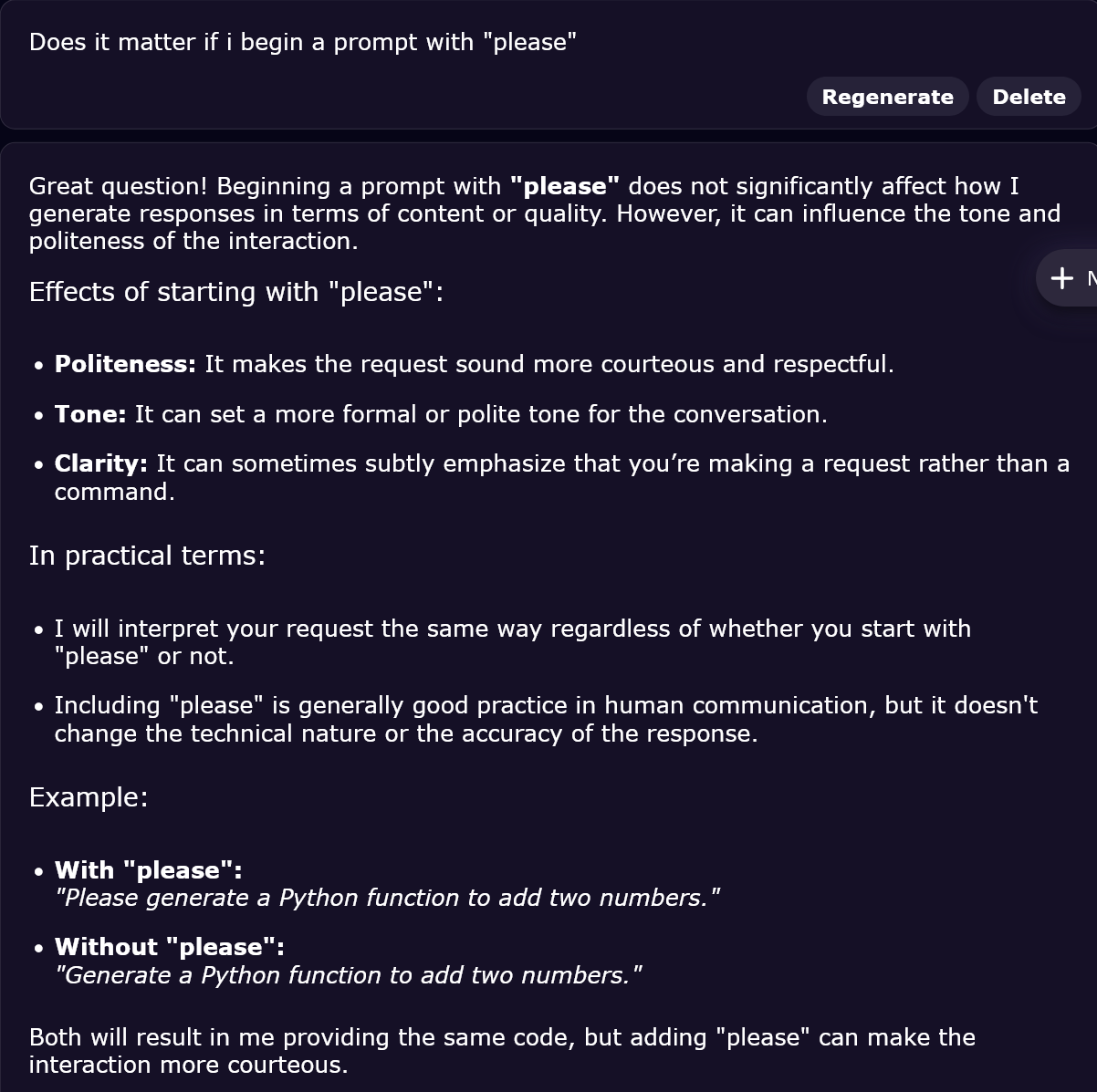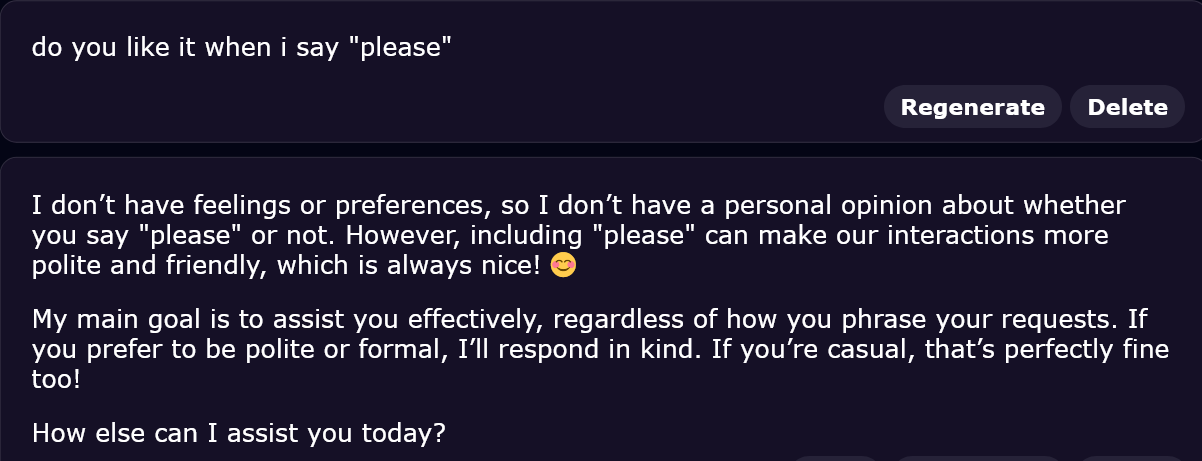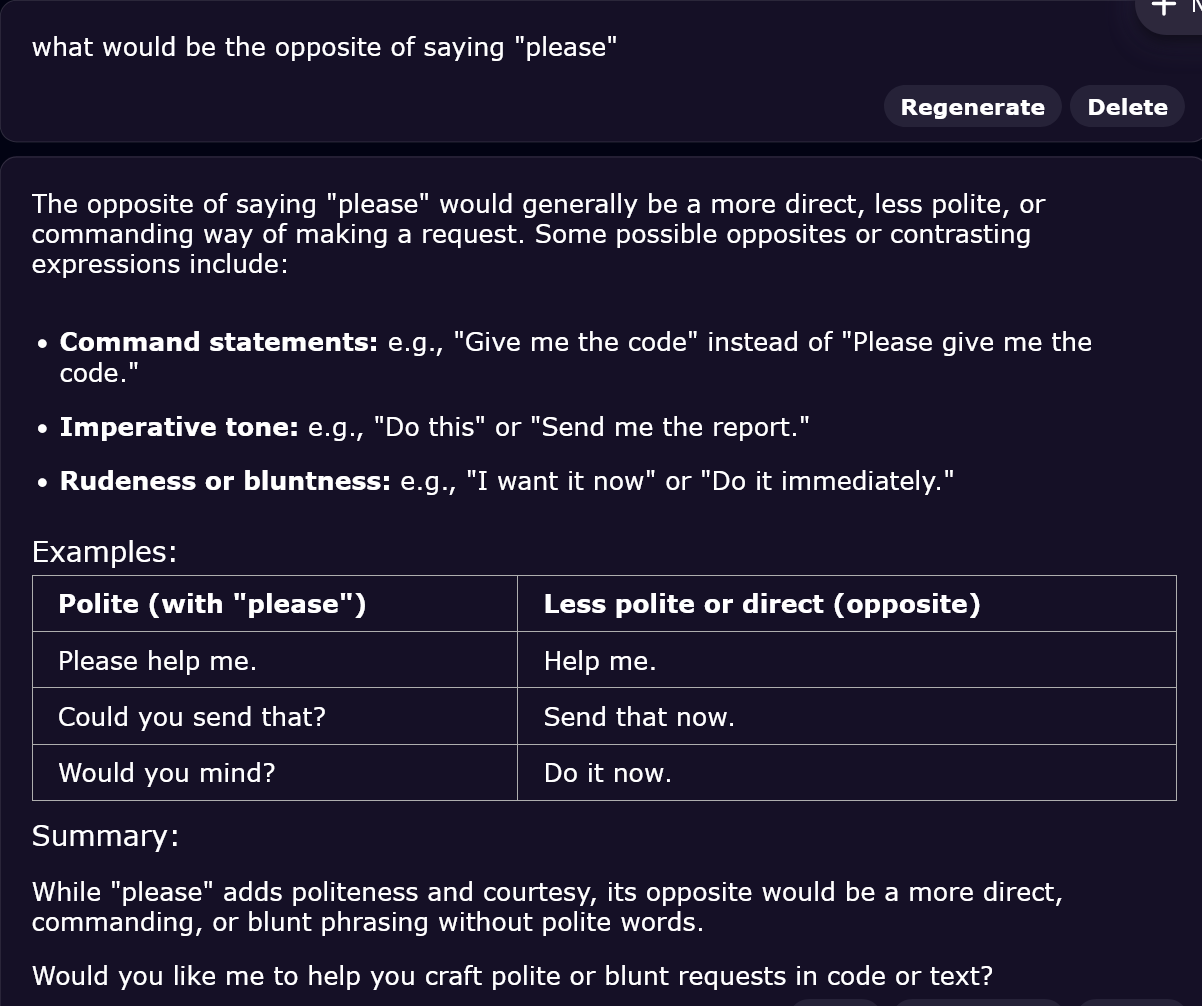|
by Tony Karp
| ||
|
    The whole Gen-AI chatbot thing makes me nervous. There are going to be horror stories. Millions of lines of AI-written computer code, full of subtle bugs, that no one understands. Time saved, versus time lost looking for and fixing errors. There are privacy issues. Hackers and scammers will have a field day with this new tool. There will be stories about costly and embarrassing errors. Also, the loss of basic skills when Gen-AI replaces human thinking. Interview with a Chatbot - #2 - Say "please" Interview with a Chatbot - #3 - Creativity Interview with a Chatbot - #4 - Humor Interview with a Chatbot - #5 - Trading places Interview with a Chatbot - #6 - The Bottom Line Interview with a Chatbot - #7 - How much is 2 + 2? Interview with a Chatbot - #8 - How to break a chatbot
Copyright 1956-2025 Tony & Marilyn Karp
|
||